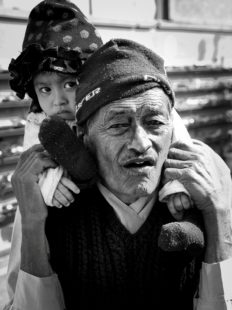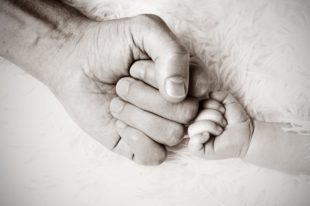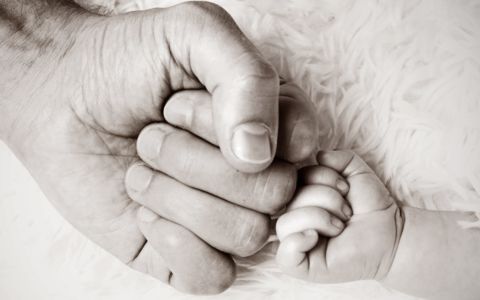How Childhood Attachment Issues Affect Adulthood Relationships
Christian Counselor Spokane
When I was two or three, my father would kneel down and look right into my face. He’d tilt his head and follow my words and expressions with deep concern. As a toddler, I had a million issues: toys my sister wouldn’t share with me, things I couldn’t reach, tasks my mother refused to let me help with.
 At two years of age, pushing a broom across the kitchen just looked cool, and usually Mom wouldn’t let me take a turn. She moved too fast and didn’t have time to teach me, so I took the matter to Dad. I didn’t know that the floor actually had to be swept. I just knew I wanted to be like my mother. Dad understood completely.
At two years of age, pushing a broom across the kitchen just looked cool, and usually Mom wouldn’t let me take a turn. She moved too fast and didn’t have time to teach me, so I took the matter to Dad. I didn’t know that the floor actually had to be swept. I just knew I wanted to be like my mother. Dad understood completely.
Chapter 7 in the book, The Body Keeps the Score, by Bessel van der Kolk, is titled “Getting on the Same Wavelength: Attachment and Attunement.” Attachment and attunement are just fancy words for successful intimacy and relationship for treating traumatized clients. They are foundational to the healing process.
Responding to trauma is like a paramedic first on-scene after an accident. The “ABCs” of first aid are: maintain Airway (make sure the victim can breath and keeps breathing), Stop Bleeding, and ensure Circulation is good.
From the moment a person is packed into an ambulance, medical professionals focus on the ABCs, monitoring them constantly until they are stable and the person can leave on their own.
Attachment and attunement are the ABCs of therapy. When therapists get together to consult each other on their cases, the word “attachment” is constantly bantered around. Some clients are harder to connect with than others, and connection is vital to the therapeutic process.
Attachment theory is critical to understand when treating traumatized clients. Attachment modalities are particularly effective when working with children, because, without attuned parents or attachments, they are most vulnerable to destabilizing mental illness.
Some argue that a lack of attachment with an attuned parent is worse than violent abuse. Children taken from primary caregivers and placed in foster care due to abuse have a far higher chance of developing PTSD than soldiers in combat.
Van der Kolk writes, “Children are programmed to choose one particular adult (or at most a few) with whom their natural communication system develops. This creates a primary attachment bond. The more responsive the adult is to the child, the deeper the attachment and the more likely the child will develop healthy ways of responding to the people around him.”
 My father letting me sit on his knee, his empathizing, albeit unnecessarily condescending attention, deepened my attachment to him. Even when my father was watching television or talking to guests in our home, he always let me sit on his lap, hang from his neck, or just lay in his arms for as long as I wanted.
My father letting me sit on his knee, his empathizing, albeit unnecessarily condescending attention, deepened my attachment to him. Even when my father was watching television or talking to guests in our home, he always let me sit on his lap, hang from his neck, or just lay in his arms for as long as I wanted.
Freud likened the way a child feels about an attached parent to falling in love. Barring his controversial connection between parent-child bonding and sexuality, I can think of no better description about how I felt as a child.
Most people, if you look beyond sexuality, equate falling in love with a deep sense of safety in the universe, a renewed energy to live life, and a sense of being met and understood. Children most definitely experience this on steroids with healthy attachments.
A renowned attachment researcher, Colwyn Trevarthen, stated: “The brain coordinates rhythmic body movements and guides them to act in sympathy with other people’s brains. Infants hear and learn musicality from their mother’s talk, even before birth.”
Attachment, according to van der Kolk, gives us the capacity for empathy, the ability to delight in other people, and to smooth things over or reestablish harmony after a rupture occurs in a relationship. Because that’s what relationships are – damage and repair.
Van der Kolk writes, “We soothe newborns, but parents soon start teaching their children to tolerate higher levels of arousal, a job that is often assigned to fathers. Learning how to manage arousal [or stress] is a key life skill, and parents must do it for babies before babies can do it for themselves. If that gnawing sensation in his belly makes a baby cry, the breast or bottle arrives. If he’s scared, someone holds and rocks him until he calms down. If his bowels erupt, someone comes to make him clean and dry. Associating intense sensations with safety, comfort, and mastery is the foundation of self-regulation, self-soothing, and self-nurture.” Van der Kolk explains a secure attachment between parent and child leads to coping with life’s challenges, an important life skill.
 Because my father was my only attachment up to a certain age, I showed mild signs of PTSD when he left home for periods of time. Once, while unsupervised with the TV set, I saw news footage that I really shouldn’t have: Iranian militants parading blindfolded hostages outside the US Embassy in Tehran.
Because my father was my only attachment up to a certain age, I showed mild signs of PTSD when he left home for periods of time. Once, while unsupervised with the TV set, I saw news footage that I really shouldn’t have: Iranian militants parading blindfolded hostages outside the US Embassy in Tehran.
The images terrified me, not because I felt for the prisoners, but because I imagined my father being one of them. I was thereafter plagued with intrusive thoughts of my father with his hands bound, forced to wear a blindfold, driven to his knees, even shot. The thought of ever losing my father, let alone in such a cruel and calloused way, caused in me a hypervigilance for his safety – a trait of PTSD.
When he was on a trip, I had to rely on other attachments to survive: friends, family, teachers, imaginary characters in a pinch. The stress of separation took its toll, and the emotional burden of not feeling safe, with all the physiological responses that come from that, lowered my ability to cope.
I remember when my mother took me to the airport to welcome my father home from a trip. It would be our last separation, because he was retiring from the Air Force. Over four decades later, I can still vividly picture the airport, the glow of my father’s happy expression as he emerged from the Aerobridge and walked toward us.
My heart stopped, as they say, when I saw that familiar look of relief he had when he spotted us over the crowd. My sister and I – dressed up by my mother in matching dresses – flew towards him, and he dropped his bag dramatically, opened his arms and swept us up onto his shoulders.
The burden of stress all but dissipated. It was replaced immediately by an unexplainable and overwhelming sense of security. My primary connection had returned to me.
The stress of disconnect from a safe attachment can scatter and disrupt a child’s mental health and development. The deep attachment children feel, along with their gratuitous fantasy lives, help them cope with normal stress.
Like Cinderella, I was able to hope and dream for a future rescue from stress, maintain a faith in some possible salvation to come, and if nothing else, imagine safe attachments when there weren’t any.
 According to good research, I can credit the days of snuggling in my father’s lap and connecting with his sympathetic face when I was very young. What’s hidden in the iconic fairytale of Cinderella is that her unyielding hope and faith, her survival skills, while credited to a saintly temperament, likely stemmed from her early childhood attachments to reliable and secure parents.
According to good research, I can credit the days of snuggling in my father’s lap and connecting with his sympathetic face when I was very young. What’s hidden in the iconic fairytale of Cinderella is that her unyielding hope and faith, her survival skills, while credited to a saintly temperament, likely stemmed from her early childhood attachments to reliable and secure parents.
* * *
According to van der Kolk, the pediatrician and psychoanalyst Donald Winnicott is the father of modern studies on attunement. Winnicott argued that physical interactions between parent and child provide the foundation for a lifelong sense of identity.
Van der Kolk quotes Winnicott, stating, “The way a mother holds her child underlies ‘the ability to feel the body as the place where the psyche lives.’ This visceral and kinesthetic sensation of how our bodies are met lays the foundation for what we experience as ‘real.’”
No parent is perfect, so van der Kolk reminds Winnicott was the theorist who coined the term “good enough mother,” encapsulating his observations that most mothers naturally attuned to their infants with no extraordinary talent.
In cases, though, when a parent cannot meet a baby’s impulses and needs, Winnicott observes: “The baby learns to become the mother’s idea of what the baby is.” Van der Kolk points out this results in an ongoing denial of the child’s inner sensations, making attachment in marriage and community more difficult later on, and attachment to others is a life-long need.
Van der Kolk writes, “Children who lack physical attunement are vulnerable to shutting down the direct feedback from their bodies, the seat of pleasure, purpose, and direction.”
Poor attachment in childhood results in the same physical and behavioral reactivity wartime combatants exhibit when they return from battle with PTSD: relationships break down, unbearable emotions lead to isolation, sometimes addiction, and mental health issues become pervasive. All of this because the body doesn’t feel safe.
Christian Counseling for Attachment Issues
If these signs and symptoms of attachment issues sound familiar to you – either in your own life or the life of a loved one, please consider meeting with a Christian counselor. A professional counselor can help you sift through the root causes of your concerns and unwanted responses and behaviors, and learn how to develop healthier attachments and relationships. Visit our online counselor directory today to schedule an appointment.
Photos:
“Ride”, Courtesy of Maskedemann, Unsplash.com, CC0 License; “Mommy”, Courtesy of Alicia Petresec, Unsplash.com, CC0 License; “Daddy’s Girl”, Courtesy of Caroline Hernandez, Unsplash.com, CC0 License; “Fist Bump”, Courtesy of Heike Mintel, Unsplash.com, CC0 License





